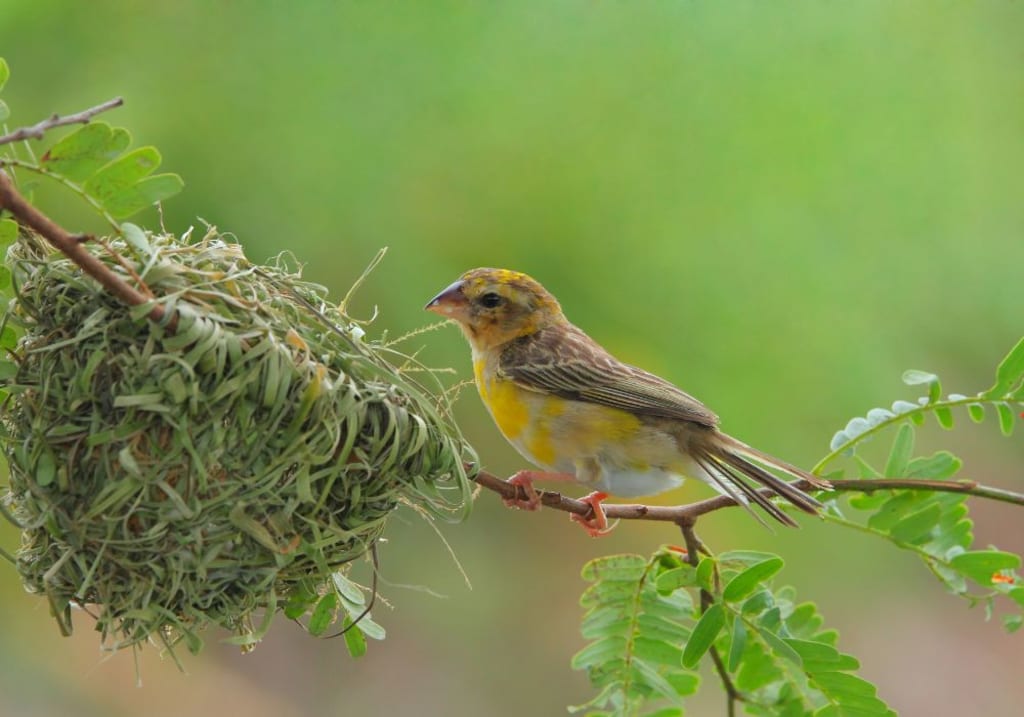
Determining the age of a bird can be a fascinating and informative aspect of bird watching and avian biology. Whether you're a professional ornithologist or a casual backyard bird enthusiast, understanding the age of a bird can provide valuable insights into its life cycle, behavior, and overall health. In this comprehensive guide, we'll explore various methods and techniques to help you accurately determine the age of a bird.
Visual Cues and Plumage Changes
One of the most common ways to estimate a bird's age is by observing its plumage and physical characteristics. As birds molt and grow new feathers, their appearance can change significantly, providing clues about their age.
Juvenile Plumage
Juvenile birds, also known as hatch-year or immature birds, have a distinct plumage that differs from their adult counterparts. Juvenile feathers are often duller in color, have a more mottled or streaked appearance, and may lack the distinctive markings or patterns of adult birds. For example, juvenile hawks often have a brown or streaked plumage, while adult hawks have a more uniform, dark color.
Adult Plumage
As birds mature, they undergo a series of molts that gradually replace their juvenile feathers with adult plumage. The timing and extent of these molts can vary depending on the species, but most birds will have their full adult plumage by the time they reach their second or third year of life. Adult birds typically have brighter, more vibrant colors and distinct patterns that help with identification and courtship displays.
Wear and Tear
Another visual cue to consider when determining a bird's age is the condition of its feathers. Older birds may have more worn or frayed feathers, especially on the wings and tail, due to the cumulative effects of weathering and use. In contrast, younger birds often have crisp, fresh-looking feathers that show little wear and tear.
Molt Patterns
Observing the molt patterns of a bird can provide valuable information about its age. Birds typically undergo a complete molt once a year, replacing all their feathers, or a partial molt, replacing only certain feathers. By understanding the timing and extent of these molts, you can make more accurate age estimates.
Complete Molt
A complete molt involves the replacement of all a bird's feathers, including its flight feathers (primaries, secondaries, and tail feathers). This process usually occurs after the breeding season and can take several weeks to complete. Birds undergoing a complete molt may appear scruffy or disheveled as they grow in their new feathers.
Partial Molt
Some species undergo a partial molt, replacing only certain feathers, such as the body feathers or the feathers on the head and neck. These partial molts can occur at different times of the year, depending on the species and its breeding cycle. Observing the extent and timing of a partial molt can help you determine if a bird is a juvenile or an adult.
Skull Ossification
Another method for determining a bird's age is by examining the ossification (hardening) of its skull. In juvenile birds, the skull is not fully ossified, and you can feel a soft spot or gap in the bone. As the bird matures, this gap gradually closes, and the skull becomes completely ossified.
To check for skull ossification, gently blow on the bird's head to part the feathers and expose the skin. Then, use your fingers to feel for any gaps or soft spots in the skull. Keep in mind that this method is most effective for birds that are still in their first year of life, as the skull will be fully ossified by the time they reach adulthood.
Bill and Leg Color
Some species of birds exhibit changes in their bill and leg color as they mature. For example, young eagles have dark bills and legs that gradually become lighter as they age. Similarly, young pelicans have dark bills that turn pink or orange as they reach adulthood.
While bill and leg color can be a useful indicator of age, it's important to note that this method is not always reliable, as color changes can vary depending on the species and individual bird. Additionally, environmental factors, such as diet and habitat, can also influence bill and leg color.
Behavior and Vocalizations
Observing a bird's behavior and vocalizations can provide clues about its age. Juvenile birds may exhibit different behaviors and sounds compared to their adult counterparts, especially during the breeding season.
For example, young birds may beg for food from their parents even after they have fledged, or they may make begging calls that differ from the adult calls. Additionally, juvenile birds may be less skilled at foraging and may be more likely to engage in play behavior.
It's important to note that while behavioral and vocal differences can be useful indicators of age, they should be considered in conjunction with other methods, as individual variation and environmental factors can also influence a bird's behavior and vocalizations.
Banding and Ringing
One of the most accurate methods for determining a bird's age is through banding or ringing. This process involves placing a small, uniquely numbered metal or plastic band on a bird's leg, which allows researchers to track the bird's age, movements, and survival over time.
When a banded bird is recaptured or observed, the band number can be used to access records that provide information about the bird's age and history. This method is commonly used by professional ornithologists and researchers, but it is not always practical for casual bird watchers.
Limitations and Considerations
While the methods described above can help you estimate a bird's age, it's important to keep in mind that there are limitations and considerations to be aware of:
- Individual variation: Each bird is unique, and there can be significant variation in the timing and extent of molts, plumage changes, and other age-related characteristics.
- Species differences: Different species of birds may exhibit different patterns of molt, plumage changes, and age-related characteristics, so it's important to familiarize yourself with the specific traits of the species you are observing.
- Environmental factors: Factors such as diet, habitat, and stress can influence a bird's appearance and behavior, which can make age estimation more challenging.
- Overlap in characteristics: Some age-related characteristics, such as plumage and bill color, can overlap between juvenile and adult birds, making it difficult to determine the exact age of the bird.
Conclusion
Determining the age of a bird can be a fascinating and rewarding aspect of bird watching and avian biology. By using a combination of visual cues, molt patterns, skull ossification, bill and leg color, behavior, and vocalizations, you can make more accurate estimates of a bird's age. However, it's important to keep in mind the limitations and considerations associated with each method and to use them in conjunction with other identification techniques.
Whether you are a professional ornithologist or a casual backyard bird enthusiast, understanding the age of a bird can provide valuable insights into its life cycle, behavior, and overall health. By honing your skills in age estimation, you can deepen your appreciation and understanding of the fascinating world of birds.
About the Creator
Hasan
Welcome...
In this site of mine you can learn amazing things and many information that you don't know so please subscribe to my site.
Enjoyed the story? Support the Creator.
Subscribe for free to receive all their stories in your feed. You could also pledge your support or give them a one-off tip, letting them know you appreciate their work.






Comments
There are no comments for this story
Be the first to respond and start the conversation.